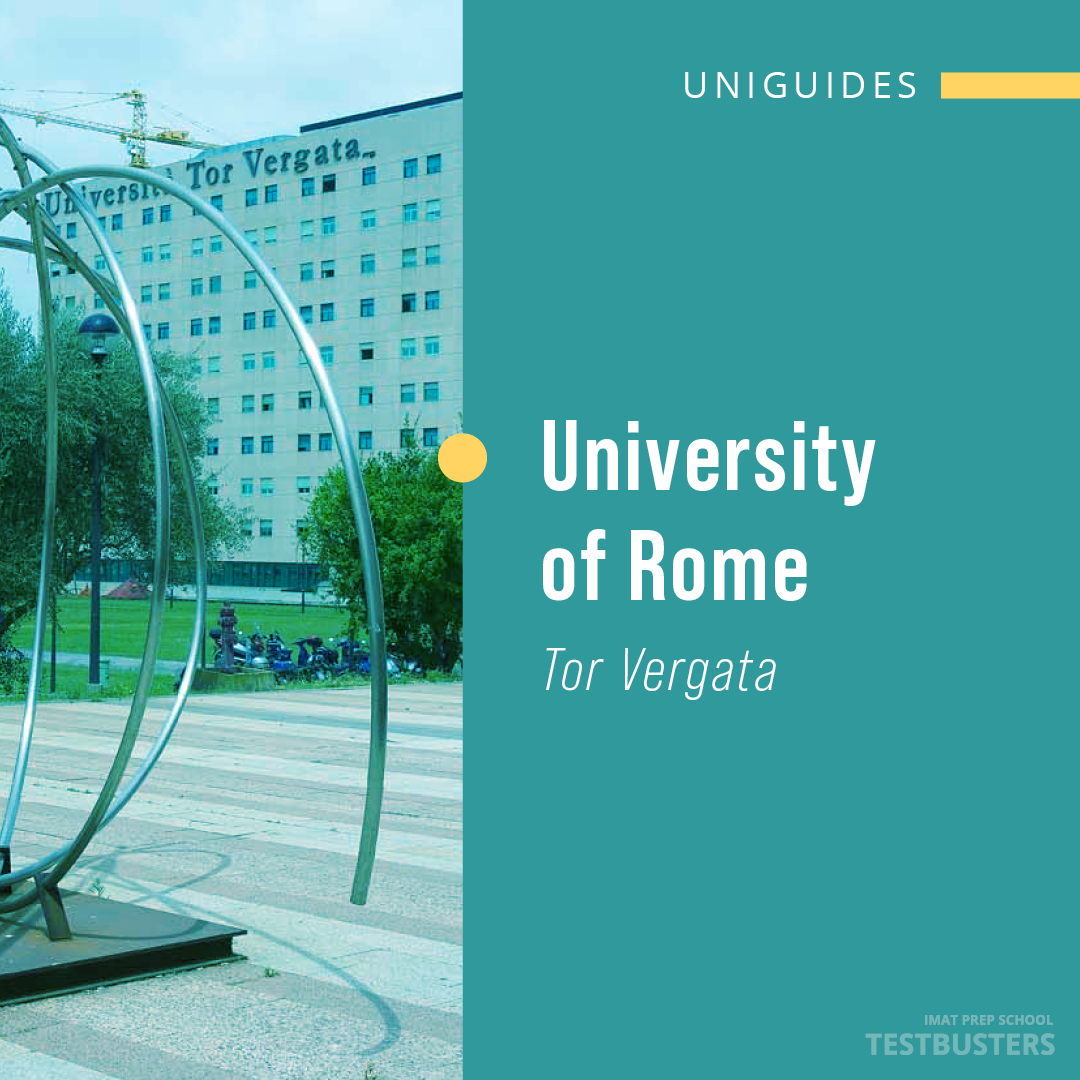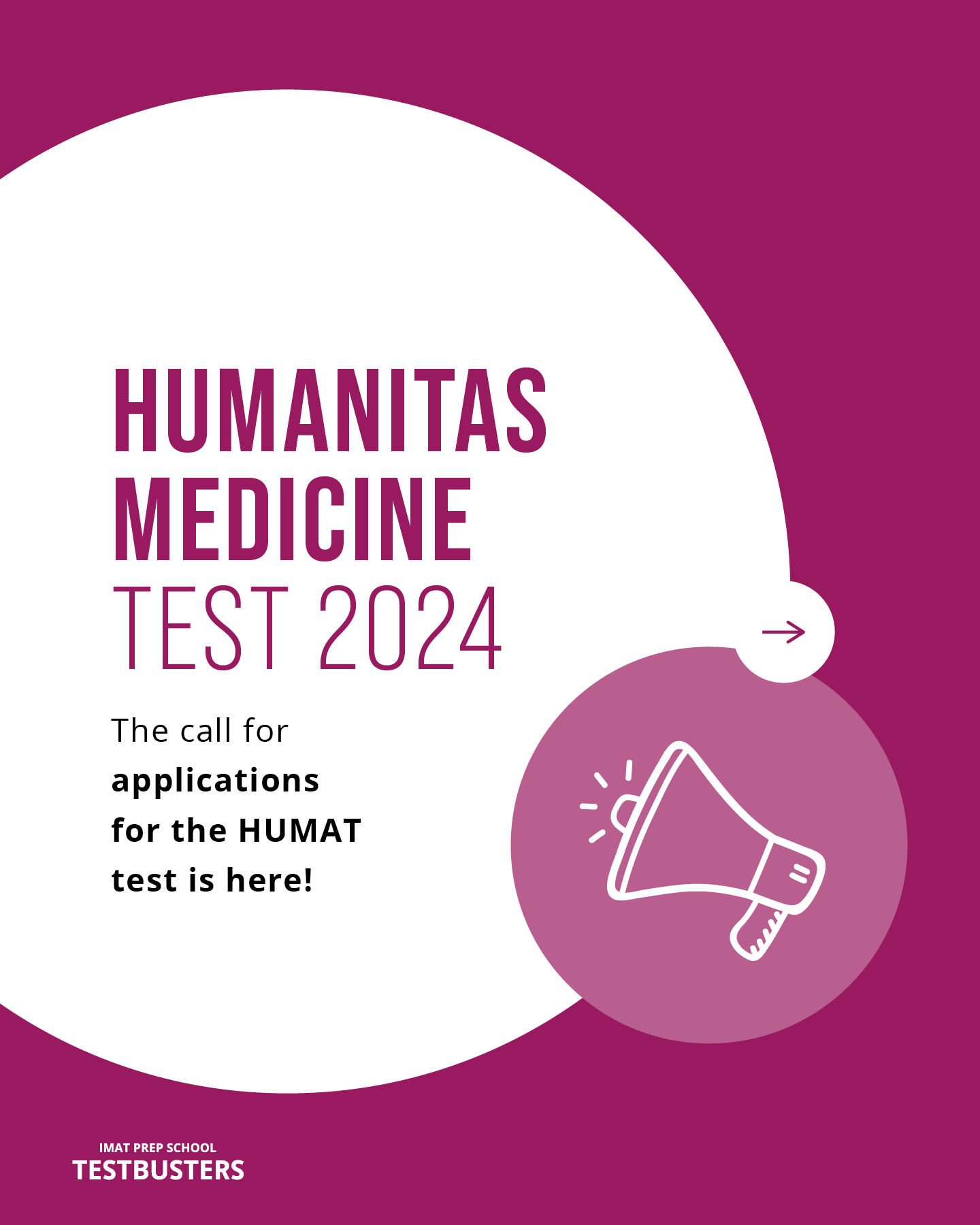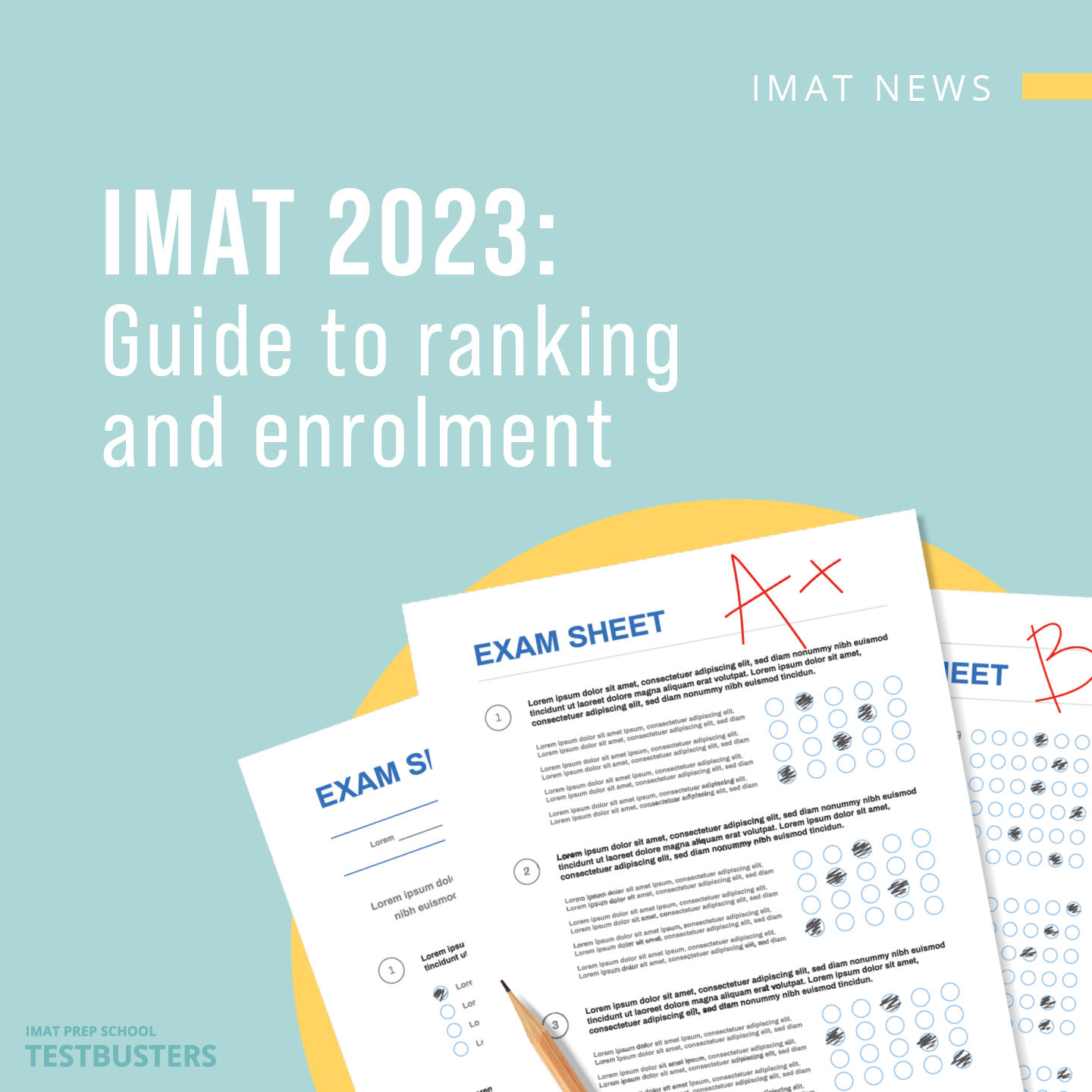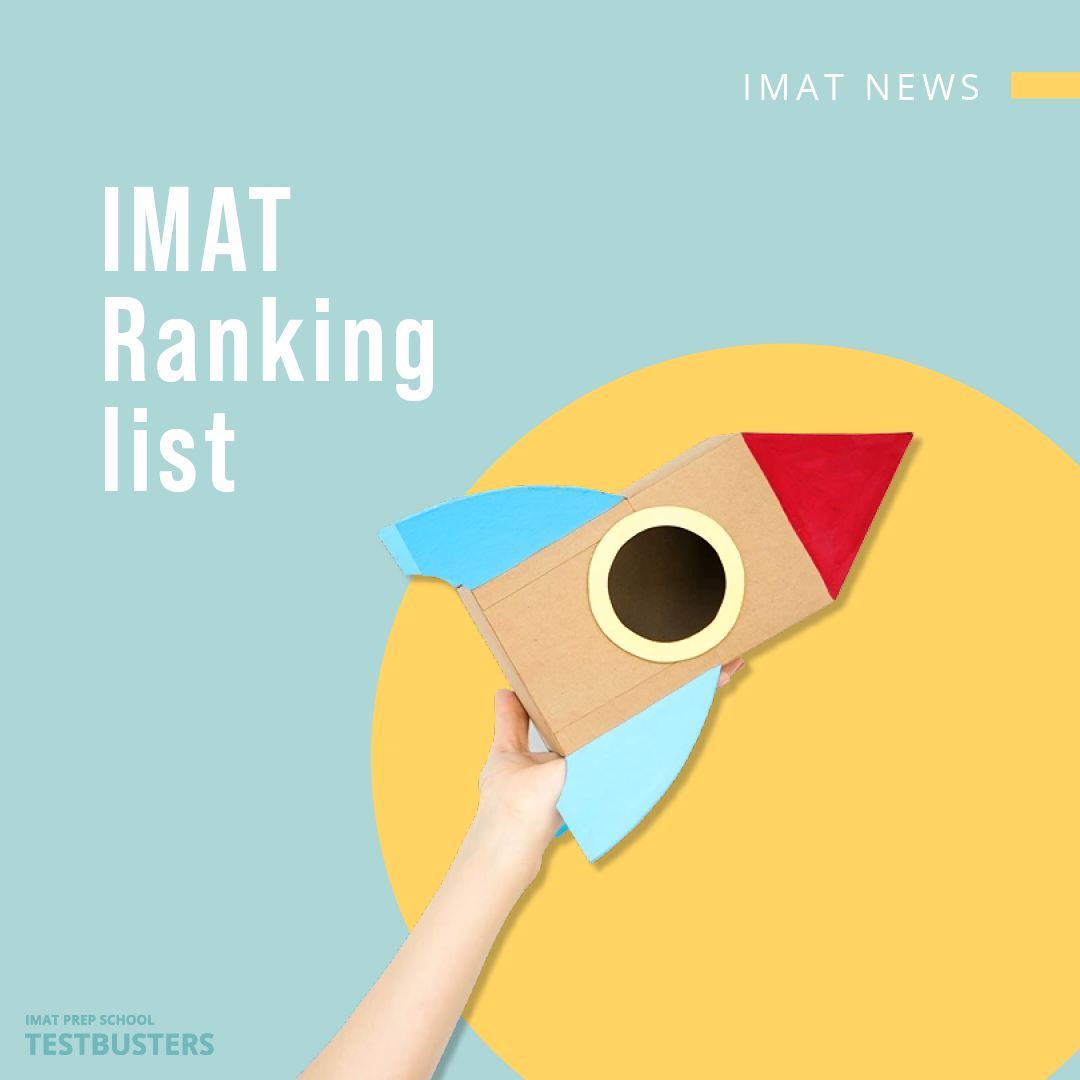
The University of Rome Tor Vergata is a public structure founded in 1982 in the suburb of Rome. The University website contains all the basics information regarding faculties, courses and admission procedures.
The University organization mirrors the American-University Campus model, with faculties’ buildings scattered among Viale Cambridge. It provides a great variety of courses, among which the most relevant is Medicine and Surgery. The latter is a Single-Cycle degree course offered both in Italian and English languages.
The Medicine and Surgery Faculty is located in Via Montpellier 1, outside the G.R.A., in Rome’s South-East area. The building is flanked by the Policlinico Tor Vergata (PTV), the Hospital pole where students can perform their training and clinical practice activities.

How to get to University
Being located in the periphery of Rome, the Ateneum is not easily reachable by means of transport:
- From Roma Termini Station: Metro A (direction Anagnina) dropping out at Anagnina (almost 25 minutes).
- From Anagnina stop of Metro A: 20 or 20L bus (departing every 6 minutes up to 8 am, every 30 minutes from 8 am on) dropping out at Heidelberg (almost 19 minutes). It is also possible to take the Cotral bus (direction Marino) dropping out at Heidelberg (4 stops, 8 minutes).
- From Torre Angela stop of Metro C: taking 20, 500, 544 or 548 at Torre Angela or Cambellotti stops, dropping out at Policlinico Tor Vergata stop.
Despite the G.R.A. early morning traffic, the best way to get to University is by car. In fact, the University offers free car parking for students.

Faculty of Medicine and Surgery – Italian Course
The Italian Faculty of Medicine and Surgery is one of the most famous courses in Rome. Applicants for Medicine and Surgery course can enroll only after having successfully passed the entrance examination test, previous registration on the Universitaly website. The available seats for 2022/2023 year are 220 for European Citizens & Non-EU Citizens with Italian Residence. The course structure is available at the following link, while the course schedule related to 2022/2023 academic year is available on this link. The clinical practice and training starts from the first year.

First Year
The first year of IMS may be quite hard for most new students. Although the timetable may be subject to changes year after year, lessons are taken every day from 8:00 to 17:00/19:00 in the first semester, and attendance is mandatory and daily checked.
First-semester exams are:
- Chemistry and Introduction to Biochemistry, 7 CFU, where a written test precedes and allows access to the final oral exam;
- Physics and Statistics, 12 CFU, composed of three modules, Medical Physics (7 CFU), Medical Statistics (3 CFU) and Informatics (2 CFU). The final grade is obtained by the weighted average of the Physics and Statistics modules grades;
- Human Anatomy I (part I), 5 CFU, whose midterm oral exam concerns the Musculoskeletal system. The course is held in the Human Anatomy Lab, where students are equipped with bone models;
- Clinical Practice I, 5 CFU, where students are allowed to perform their training.
Second-semester exams are:
- Human Anatomy I (part II), 5 CFU, whose final oral exam concerns splanchnology and is preceded by a written multiple-choice test;
- Biology and Genetics, 10 CFU, composed of a Genetics (1 CFU) and a Biology (9CFU) modules, whose final exam is oral and whose final grade is obtained by the weighted average of the two grades;
- Histology and Embryology, 9 CFU, whose final exam is oral and students are required to recognise and describe a specific slide or specimen and are preceded by a written multiple-choice test;
- Clinical Practice I, 1 CFU, where students are allowed to perform their training;
- English I, 2 CFU.
To enroll in the second year, students must have passed two exams of the first year (CP I not included).
Pros & Cons
The pros of studying Medicine at the University of Tor Vergata are:
- It allows students to have a direct approach to patients by starting training in the first year;
- Lessons are held in wide classrooms where almost 200-250 students attend. The presence is mandatory but rarely checked;
- Professors and teachers are always available for clarifications and questions;
The cons of studying Medicine at the University of Tor Vergata are:
- Classrooms are often overcrowded and students may feel dispersed or confused in the very first days of lectures;
- The University is challenging to be reached by transports. If you don’t have a car or you live far away, it can be very stressful to travel every day;
- The district in which the University is located is quite far from the center of Rome;
- As with all universities, sometimes there are administrative or didactic issues that are anyways promptly solved.
International Medical School (IMS) – English Course
The International Medical School is characterized by a multidisciplinary and integrated approach to disease prevention and health promotion. The training, which starts early in the first year, is primarily patient-oriented, involving community-based health centers and hospitals for a varied human and rich clinical experience. The University programme allows integration of clinical and basic science across the curriculum, developing new models for clinical reasoning and engaging students in an in-depth and long-term experience. The course is held entirely in English, though an Italian language course is offered to international students to improve communication and interaction with patients. By the end of the second year, non-Italian students are required to acquire a B1 certificate of the Italian language, which allows them to be admitted to the third year. Current legislation lays down six years of study totalling 360 ECTS, 60 of which for vocational training through educational activities designed to develop specific professional skills. The course is organized into 12 semesters and 36 integrated courses. These correspond to specific ECTS assigned by the teaching body’s Council and comply with the table of mandatory training activities. The teaching process takes advantage of modern educational tools, such as tutorial systems, clinical trigger, problem-oriented learning, experiential learning, problem-solving, decision-making, seminars and conferences.
Applicants for Medicine and Surgery course can enroll only after having successfully passed the entrance IMAT examination test, previous registration on the Universitaly website. The available seats for 2022/2023 year are 25 for European Citizens & Non-EU Citizens with Italian Residence. Non-EU citizens residing abroad must submit a pre-application request to the Italian Embassy or Consulate in their country of residence (10 seats for 2022-23 a.y.).
The course structure is available at the following link, while the course schedule related to 2020/2021 academic year is available on this link. In presence lectures are taken in building B classrooms, usually on the first and second floors (1B2, 1B3, 2B1, 2B3). Classrooms are named after the building’s floor and letter. The clinical practice and training activities are scheduled from the first year of study, progressively increasing the number of hours up to the sixth year.

First Year
The first year of IMS may be quite hard for most new students. Although the timetable may be subject to changes year after year, lessons are taken every day from 8:00 to 17:00/19:00 in the first semester, and attendance is mandatory and daily checked.
First-semester exams are:
- Chemistry and Introduction to Biochemistry, 7 CFU, where a written test precedes and allows access to the final oral exam;
- Physics and Statistics, 12CFU, composed of three modules, Medical Physics (7 CFU), Medical Statistics (3 CFU) and Informatics (2 CFU). The final grade is obtained by the weighted average of the Physics and Statistics modules grades;
- Scientific Writing and Research, 6 CFU, composed of 4 modules, Scientific Writing, Bioethics, English Grammar and Human Research. To pass the exam, students must write a review of a chosen topic using PubMed Articles and Reviews and give the other three modules’ written tests;
- Human Anatomy I (part I), 5 CFU, whose midterm oral exam concerns the Musculoskeletal system. The course is held in the Human Anatomy Lab, where students are equipped with bone models.
Second-semester exams are:
- Human Anatomy I (part II), 5 CFU, whose final oral exam concerns splanchnology;
- Biology and Genetics, 10 CFU, composed of a Genetics (1 CFU) and a Biology (9CFU) modules, whose final exam is oral and whose final grade is obtained by the weighted average of the two grades;
- Histology and Embryology, 9 CFU, whose final exam is oral and students are required to recognise and describe a specific slide or specimen;
- Clinical Practice I, 6 CFU, where students are allowed to spend three days in the University Hospital, learning basic medical skills.
To enroll in the second year, students must have passed two exams of the first year (CP I and Scientific Writing are not included).
Pros & Cons
The pros of studying at the University of Tor Vergata IMS are:
- It is an entirely innovative course, which allows students to have a direct approach to patients and medical doctor’s lifestyle by starting training in the very first year;
- Classes are composed of 25-30 students, and most of them come from abroad. This creates a very comfortable and stimulating environment, where students communicate in English, thus improving their speaking skills and self-confidence;
- As most of the medical world of research requires English-written papers and articles, studying in English represents a great advantage for future medical doctors;
- Professors and teachers are always available for clarifications and questions, and they are quite flexible with exam dates changes;
- The International Medical School degree is equivalent to the Italian one. Thus, graduated students are allowed to apply for the Italian Specialization test.
- Remember that all roads lead to Rome, the city of magic! So, which one could be a better city to study Medicine and spend the best years of your life?
The cons of studying at the University of Tor Vergata IMS are:
- The University is challenging to be reached by transports. If you don’t have a car or you live far away, it can be very stressful to travel every day;
- The district in which the University is located is quite far from the center of Rome;
- As with all universities, sometimes there are administrative or didactic issues that are anyways promptly solved.
Study Abroad
The University offers Erasmus and Overseas projects which allow students to study abroad. The Erasmus+ programme, the new EU programme for education, youth and sport, started in January 2014. Through the Erasmus+ programme, several students travel from the Third Faculty of Medicine for a study period abroad in another European education institution. Being the curricular activities of Universities involved in the Erasmus project significantly different from the IMS course schedule, it is not highly recommended. The University of Rome “Tor Vergata” offers the opportunity to spend one semester at extra-European partner universities under a cooperation agreement framework for teaching and exam purposes in a project called Overseas.
Where to eat
Regarding the in situ services, there are DiscoLazio mensa, located 2 minutes apart from the faculty, in Via Cambridge, and the PTV mensa, situated on the -1 floor of the hospital itself.
The PTV mensa has standard menus ranging from 4 to 5 euros.
Where to study
The Biomedic Library – P. Fasella is located on the second and third floor of building D in the Medicine and Surgery Faculty, which is also the reference point for Biology, Biomedics, Experimental Medicine, Clinical and Surgical Sciences. The BioMedical Library is a specialized library where an expert staff provides information, resources, and services to support the education, research, clinical care, and outreach missions of our Medicine and Surgery course. It is accessible to all students from 9:00 am to 22:00 during weekdays and from 10:00 am to 20:00 on weekends.
The Library contacts are the following:
Tel. 0672595413 Fax 0672595421
Via Montpellier, 1
Besides this structure, there are different study rooms on the ground floor of all the various buildings of the Faculty of Medicine and Surgery.
Accommodation and Sports
The University official campus is Campus X which is located 5 minutes by feet from the Faculty of Medicine and Surgery. The University recognises the importance of body and mental health by providing students with discounts and facilitations for the CUS Tor Vergata, the sports centre of the University, which offers a wide variety of courses in flexible times during weekdays.
Fees and Scholarships
Tor Vergata University offers a free Taxes simulator based on the ISEE (income). Besides that, it also offers several scholarships for both Italian and international students, which you can find on the following websites: University Facilities and Scholarships (Italian course), University Facilities and Scholarships (English course). Students can also apply for scholarships supplied by the Lazio region. For further information, you can visit the DiscoLazio website. You can also consult the Student Guide for detailed information regarding the University.
Bureaucracy and Administration
- Enrolment: on-line registration, payment of first instalment and validation are followed by the presentation of documentation at the Student Secretarial Office.
- Transfers: entries for any academic year other than year one, following the verification of academic credits by the University, can only take place if empty places are available and in relation to the number of places defined in the annual programming decrees. It is not necessary to pass the test in cases where students are already enrolled in the same degree courses at one of the other Italian university courses, irrespective of whether they are European Union or Non-European Union citizens. For what concerns the IMS, the recognition of exams is possible only if they were taken in English.
Italian Course
Didactic Office
- Matteo Valente (I-III anno) Tel. 06 72596971
- Fabrizia De Dominicis (IV-VI anno): Tel. 06 72596923
- Email: [email protected]
Students Secretarial Office
- Phone: 06 72596044/6045/6013
- Email: [email protected]
- Web: cdsmc.med.uniroma2.it/segreteria-studenti
URP (Ufficio relazioni con il pubblico)
Office Hours Monday to Thursday 9:00 -13:00 / 14:00 – 17:00
Phone 06 72593099
Email: [email protected]
English Course
Students’ Secretarial Office
School of Medicine and Surgery: the main office is located at the Faculty of Medicine entrance on the ground floor, Building D.
Address Via Montpellier, 1 – 00133 Roma
Telephone 0039+06-7259 6044
Office Hours Monday, Wednesday, Friday 9.00 -12.00;
Wednesday 14.00 – 16.00 (in August closed on Wednesdays)
Email: [email protected]
University Foreign Students’ Office
Address Via Cracovia, n. 50 – 00133 Roma
Edificio D – floor room 0 – stanza n. 001
Telephone 0039+06-7259 2566-67
Office Hours Monday, Wednesday, Friday 9.00 -12.00
Wednesday 14.00 – 16.00
Email: [email protected]; [email protected]



